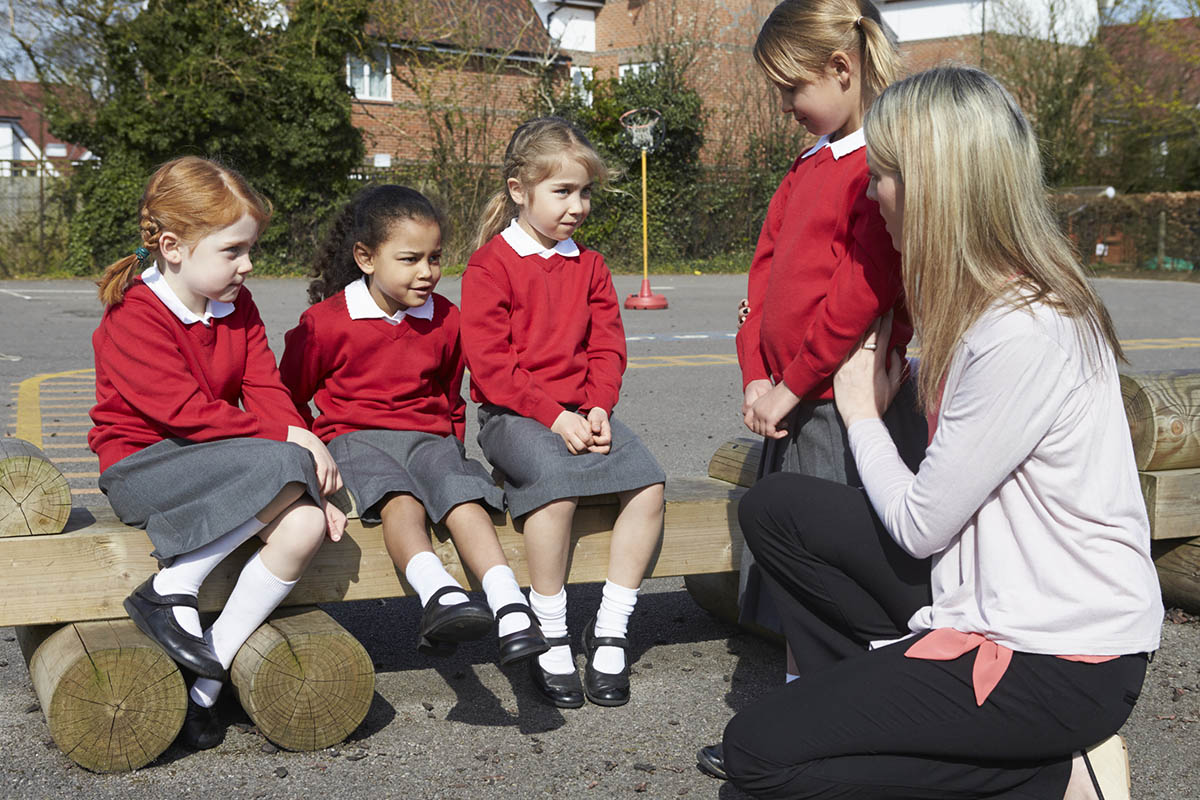Creating a More Just and Merciful World
Teachers Helping Students Learn Conflict Resolution Skills

Conflict happens, even in the most positive learning environments. That is why teachers must be adept at conflict resolution.
Without resolution, conflict could lead to further disruptions or worse—violence.
Understanding Conflict To Support Students’ Developmental Skills
It is important not to think of student conflict as extremely bad or a failure in teaching.
Anger, frustration, hurt and fear are normal feelings. These feelings, and the circumstances of the conflict itself, cause the human body to react with a fight-or-flight stress response, according to psychology experts and relationship therapists. Our instincts prepare us to protect ourselves in these situations and confront the other party by taking an offensive or defensive position.
Meanwhile, conflict resolution is part of social and emotional development. Emotional engagement is a key part of student achievement, research says. It produces mutual understanding and empathy. Thus, effective conflict resolution and management focuses on engagement, offering solutions with consideration of the feelings involved.
Serving as mediator, a teacher can encourage emotionally engaging relationships between students, which can lead to more successful resolution to problems and conflicts. The teacher can identify the underlying emotional triggers that will result in productive interactions.
Steps Teachers Can Take To Resolve Student Disputes
The potential risks that unresolved disagreements could have on student learning and safety prompt many school systems to emphasize conflict resolution training.
A paper authored by directors from the National Center for Conflict Resolution Education (NCCRE) explains why schools should implement programs that train educators how to conduct youth conflict resolution. One reason, the authors say, is that conflict resolution training increases skills in listening, critical thinking and problem solving.
The NCCRE paper and information from childhood education nonprofit Waterford.org detail strategies teachers can use for dealing with conflict between students. Here are the steps teachers can take to help students resolve a dispute:
- First, make sure everyone is calm. Students need time to cool off. Younger students can take some deep breaths to relax. This helps set the stage for problem solving.
- Open up communication and gather perspectives. Give students a chance to share their grievances and listen to each other.
- Help students focus on the underlying motivations behind their positions. Encourage them to take responsibility for their actions and consider what could have been done differently to change what happened.
- Guide students toward compromise and solutions. Create options that address the interests of the students involved in the dispute.
- Evaluate options using objective criteria that ensures the agreement will reflect some fair standard.
- Choose the appropriate solution and aim for a compromise that is a win-win. Generate an agreement that is satisfactory to all involved.
Conflict resolution procedures must be adapted to meet the specific needs and abilities of the students. This means using practices that are age and behaviorally appropriate.
Reconciliation as a Goal
Nonviolent communication models emphasize reconciliation as a goal of conflict resolution. Ultimately, individuals seek security, belonging, acknowledgement and independence. Conflicts might arise when any of these needs are threatened. Compassionate and empathetic communication are key ingredients to solving many disputes.
Support Children’s Developmental Skills
Conflict resolution is part of the developmental skills that are essential for self-awareness and social interaction. You can nurture these skills and help students reach their full potential by expanding your knowledge of early childhood education. Choose Carlow’s Early Childhood Education degree program and learn how to create environments and relationships that allow children to thrive.
